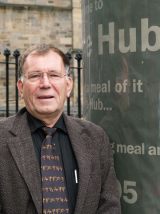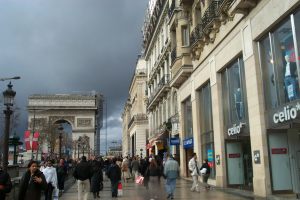|
Subscribe / Renew |
|
|
Contact Us |
|
| ► Subscribe to our Free Weekly Newsletter | |
| home | Welcome, sign in or click here to subscribe. | login |
Architecture & Engineering
| |
June 3, 2005
Danish architect: cities should focus on people spaces
Journal Staff Reporter
Jan Gehl, a Danish architect and urban design professor, will be in Seattle next week to talk about how Seattle can improve its public spaces.

Gehl
|
Gehl, 69, founded a Copenhagen firm called Gehl Architects — Urban Quality Consultants, and visits cities around the world as a speaker and urban design consultant.
He has written several urban planning books, including "New City Spaces," which looks at how nine cities, including Portland, have improved their open space.
He will speak at 5:30 Monday at the Central Library, and at 6:30 p.m. Wednesday on Occidental Street. Tickets for Wednesday's event, sponsored by International Sustainable Solutions, are available by going to www.i-sustain.com.
Gehl spoke by phone yesterday from his home in Copenhagen.
Q: How does Seattle rate, in terms of public spaces and being pedestrian friendly?
A: Vancouver, B.C., Seattle and Portland stand out among cities that generally have a much nicer feel to them and are much more people friendly. On a map of the more interesting cities of the United States, Seattle would be in the Top 10. On the negative side, the city has been cut off from the waterfront. The new waterfront tunnel sounds like an excellent idea.
Q: What mistakes do cities commonly make?
A: Every city in the world has an excellent traffic department, with models and prognoses for where the city will be five years from now. But no city has an office for pedestrians and public life to study how people use the city. I would say that's why traffic is so visible in the planning process, and people are so invisible. We have found that collecting data about how cities are used by pedestrians is a very strong tool in planning and developing cities.

Photo by Sam Bennett
Jan Gehl said the Champs Elysées in Paris shows cities can offer a vibrant pedestrian environment and still accommodate high car volumes.
|
A: Public life is very important for a healthy and attractive city, and very good for pollution and sustainability. It's also very important to making an open and democratic society — that people meet in the public realm in their daily doings.
Q: In your book, "New City Spaces," you described a "re-conquered" city as one where the public re-claims streets as pedestrian zones. How common is that?
A: I've seen a pattern of re-conquering cities throughout the world — from southern Australia to northern Norway and from Japan to the American coasts. What we can see is that more and more cities are trying to strike a much better balance between the city as a meeting place, a market place and a moving place.
It's very good for cities to have a good reputation and to be loved by citizens. If you do a proper job of inviting people to cities, then the economy will prosper.
Q: Can people and cars peacefully co-exist?
A: It depends whether people are being treated properly or not, whether sidewalks are wide enough to walk in dignity and leisure, like the boulevards in Paris. The Champs Elysees has 135,000 vehicles a day, but it also has 24-meter-wide sidewalks. It is the way people are treated, not whether there are cars or not. Cars can be nicely accommodated.
Q: What role should private developers play?
A: In Copenhagen, we have three or four squares donated to the city by companies or private citizens. All around the world, private investors are realizing the quality of public space and how it is very instrumental in the value of property.
Q: In Seattle and in northern Europe winters are long and cold. How much time do people want to spend outside?
A: In Copenhagen, in 40 years we have consistently improved public spaces. People said you could never have a sidewalk cafe because it's too cold, but people get used to it and enjoy the city. They come out earlier and stay longer. We've seen a fantastic change, where the Mediterranean behavior has creeped up well into the middle of Norway.
Q: As malls morph into European-style shopping centers, how can downtowns distinguish themselves?
A: Cities have to be on their toes to provide something more interesting than any mall. Cities are different: Seattle is different from Vancouver and Vancouver is different from San Francisco. If you've seen one mall, you've seen most. Cities are much more interesting.


